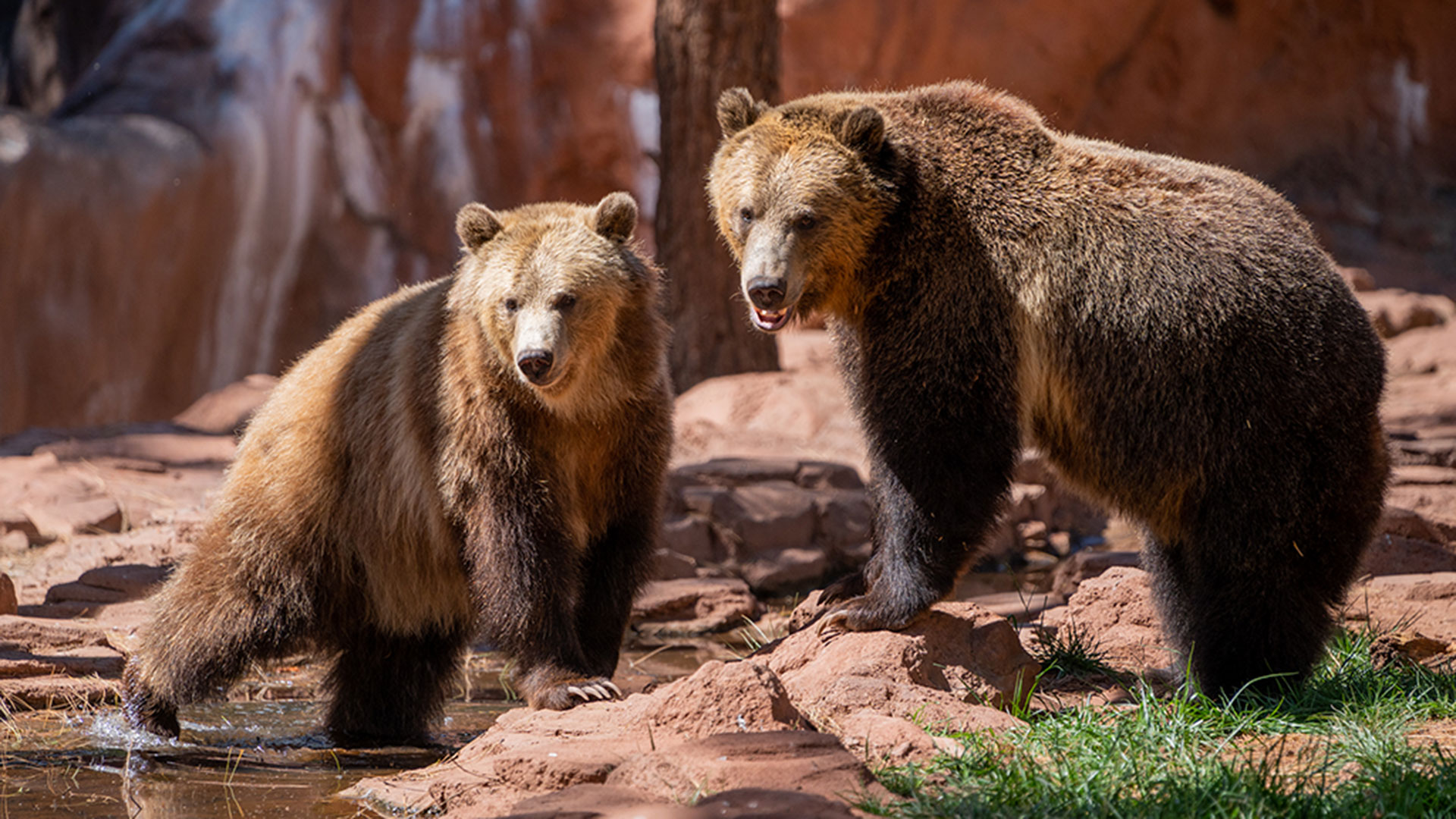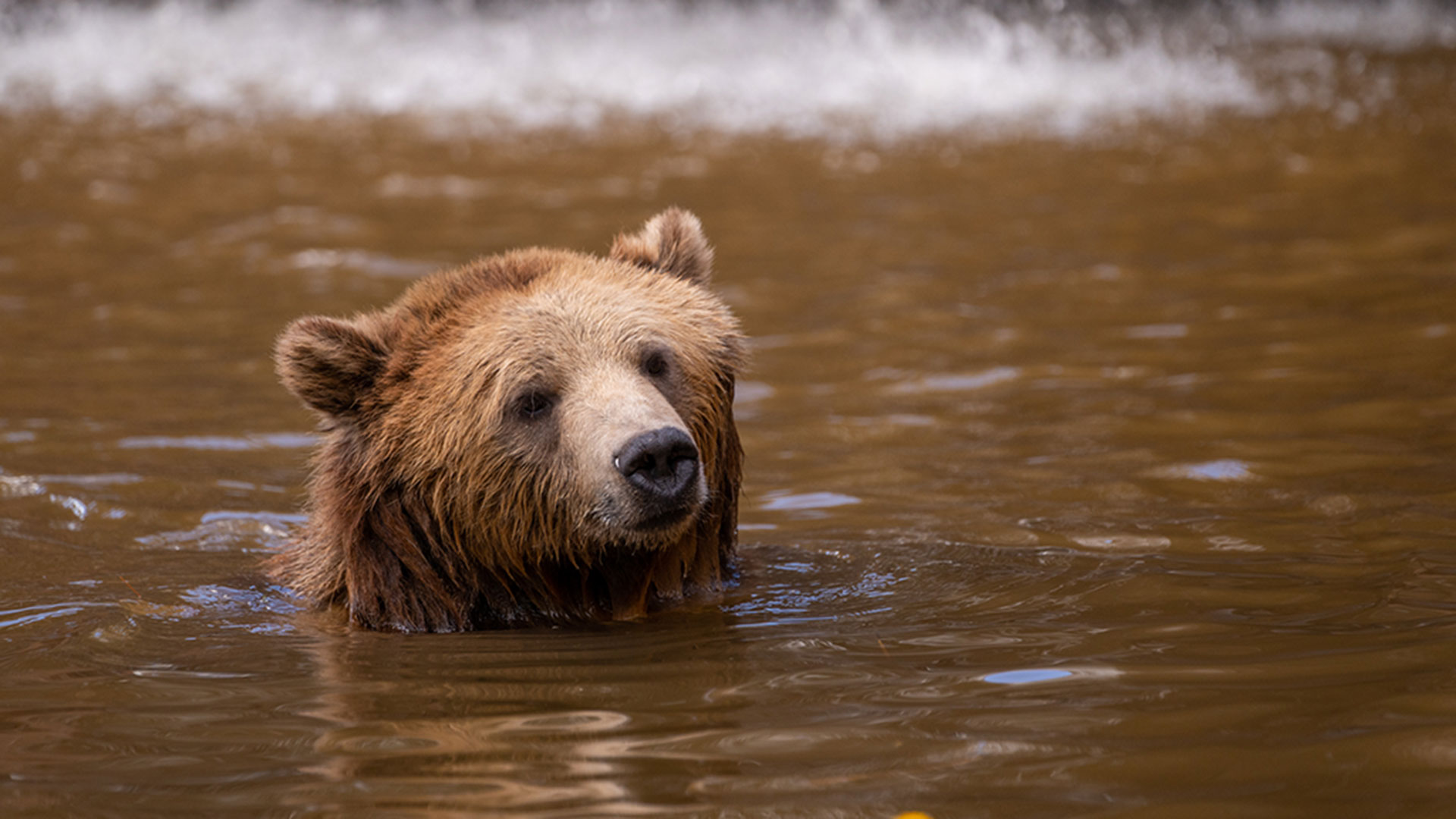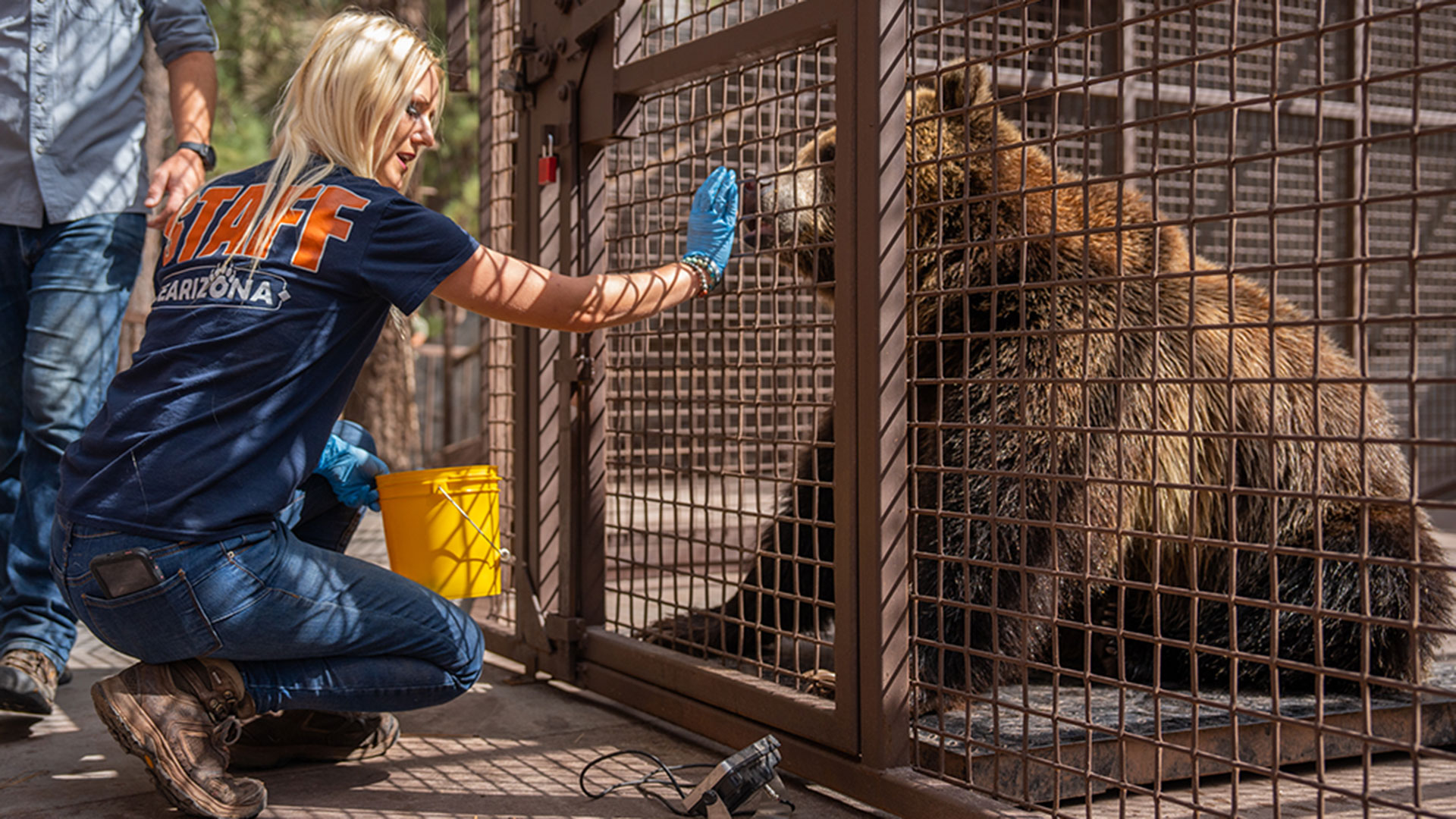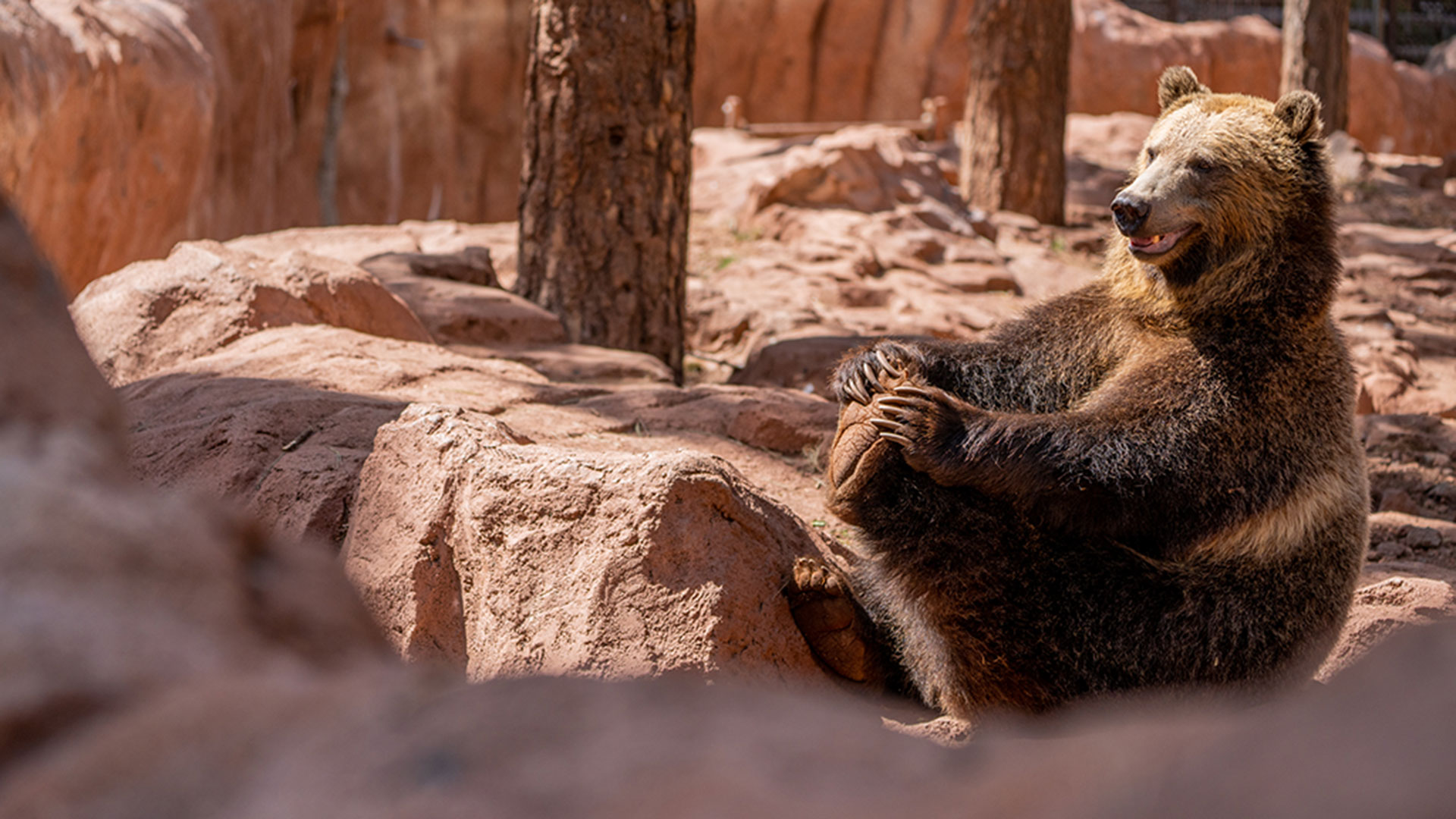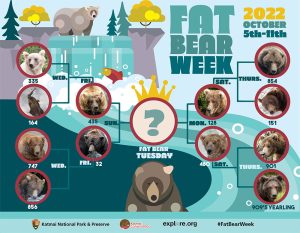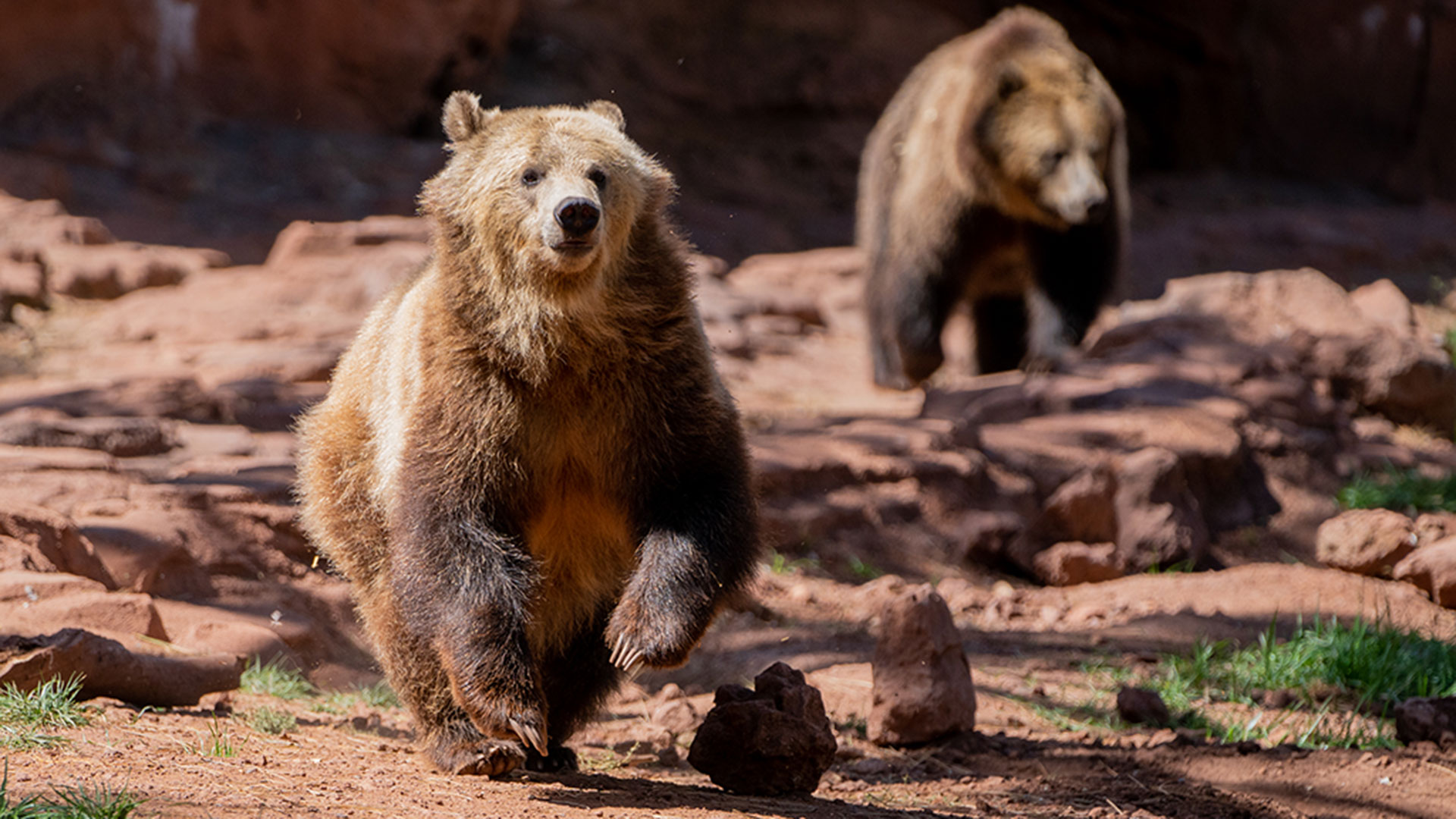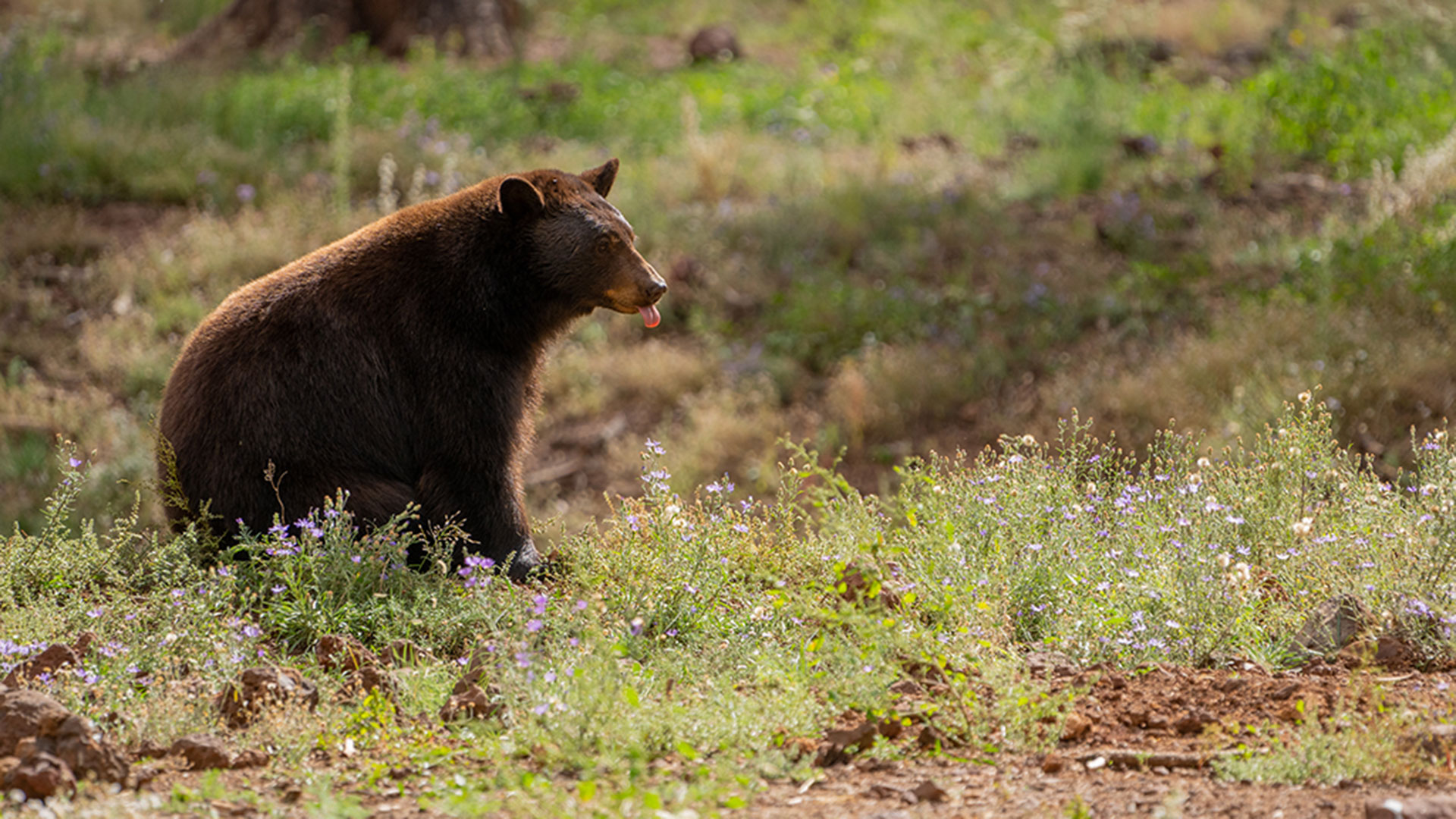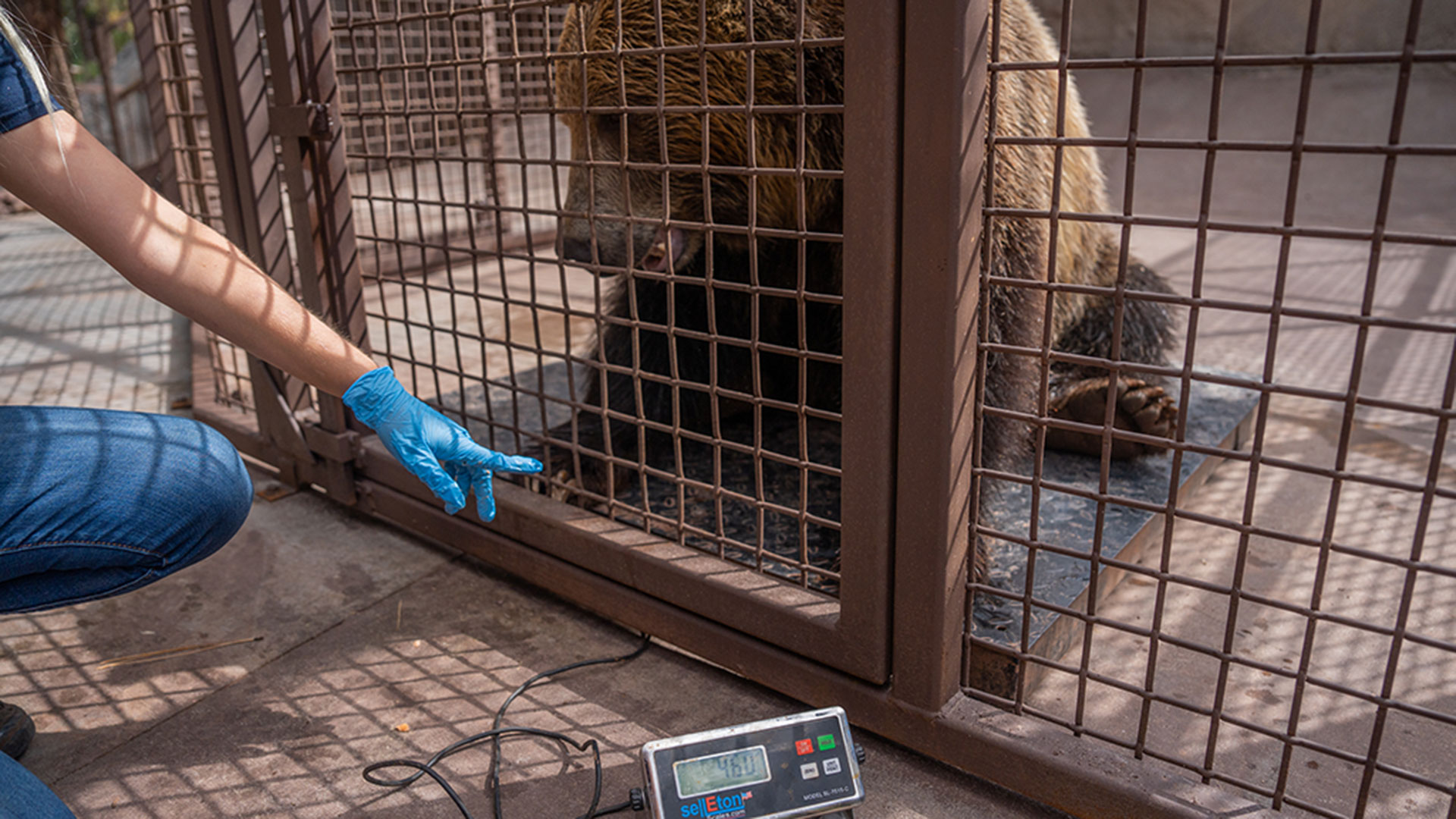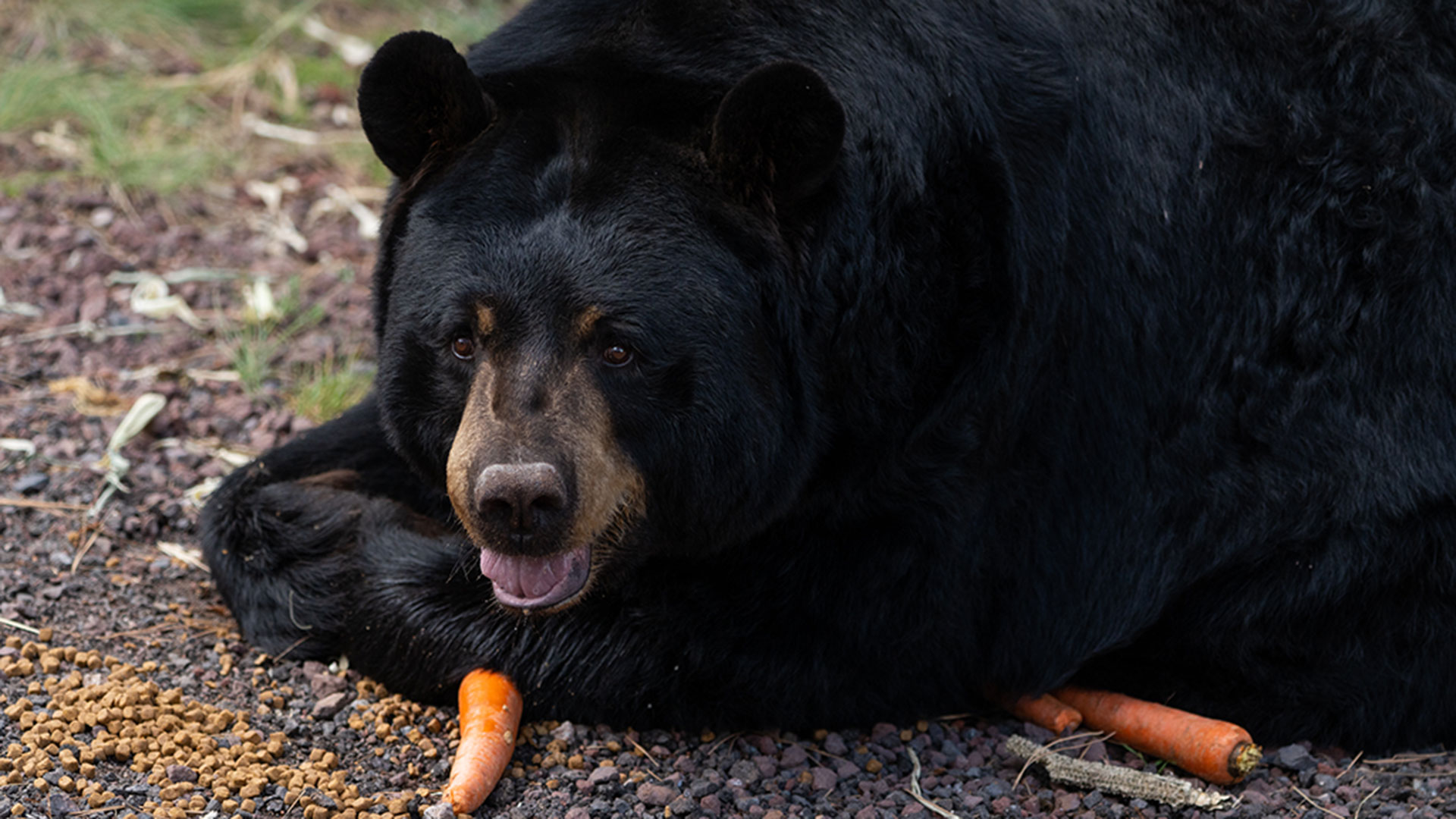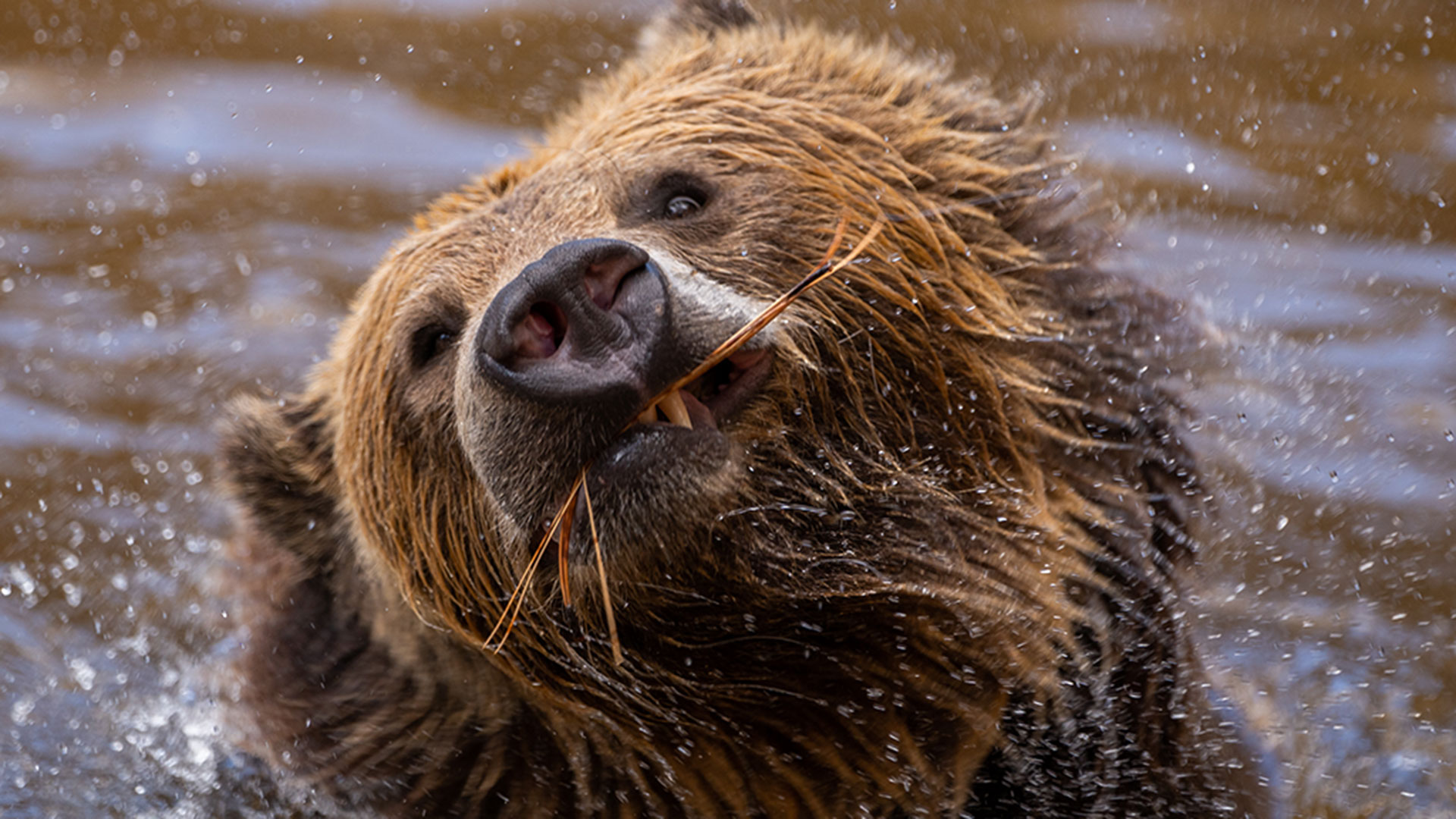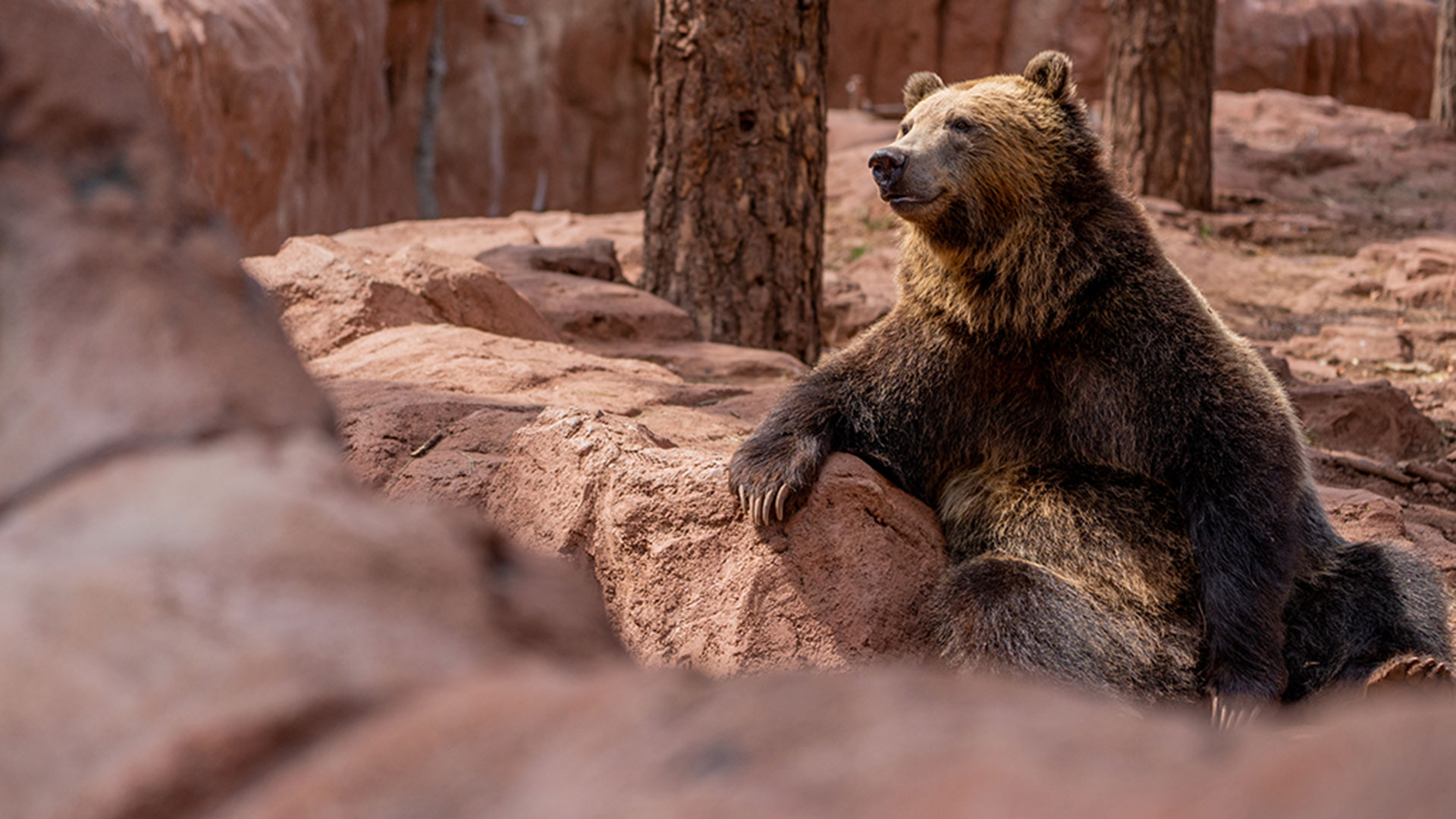‘It’s alright to be a fat bear’: Why Fat Bear Week is more than a beauty contest
‘It’s alright to be a fat bear’: Why Fat Bear Week is more than a beauty contest
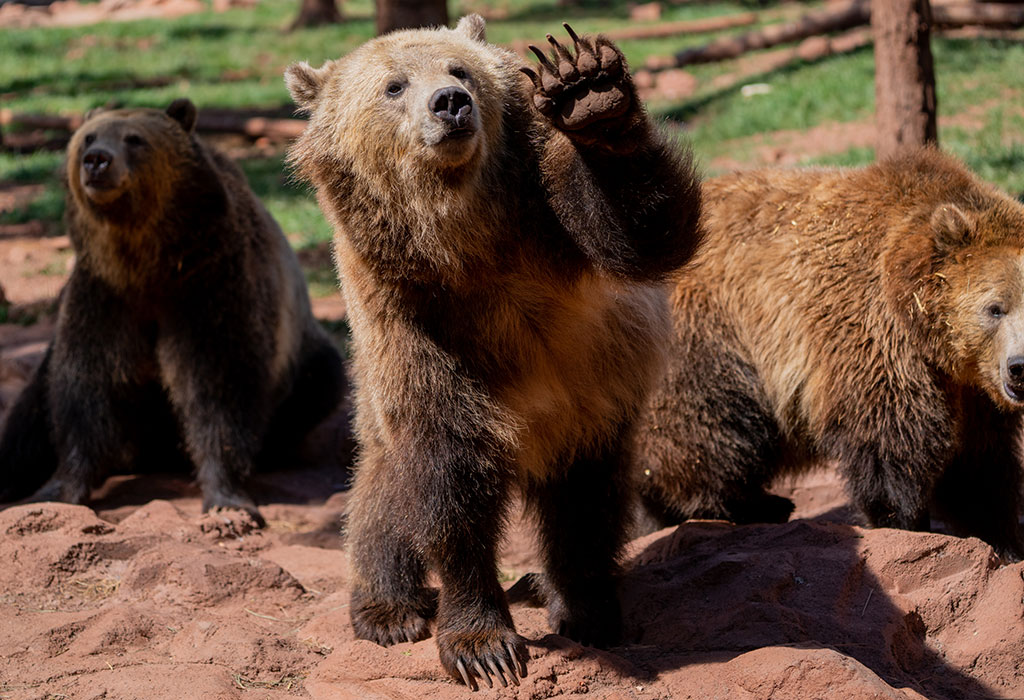
Sky, a grizzly at Bearizona Wildlife Park in Williams, waves to visitors on Sept. 26. Her trainers say Sky learned this behavior from visitors waving at her. (Photo by Samantha Chow/Cronkite News)
